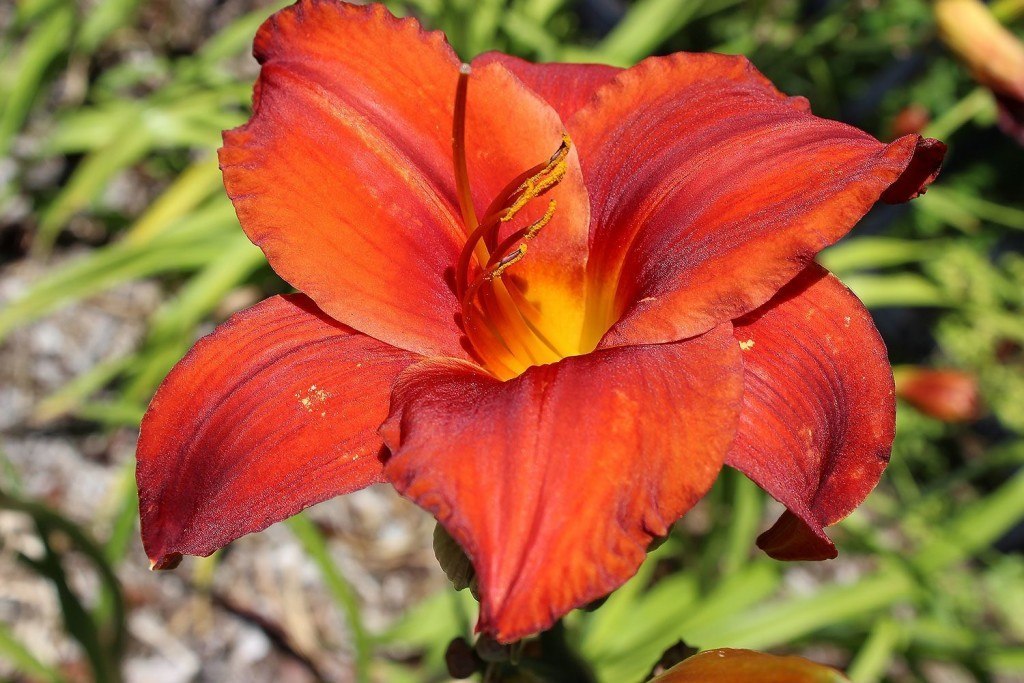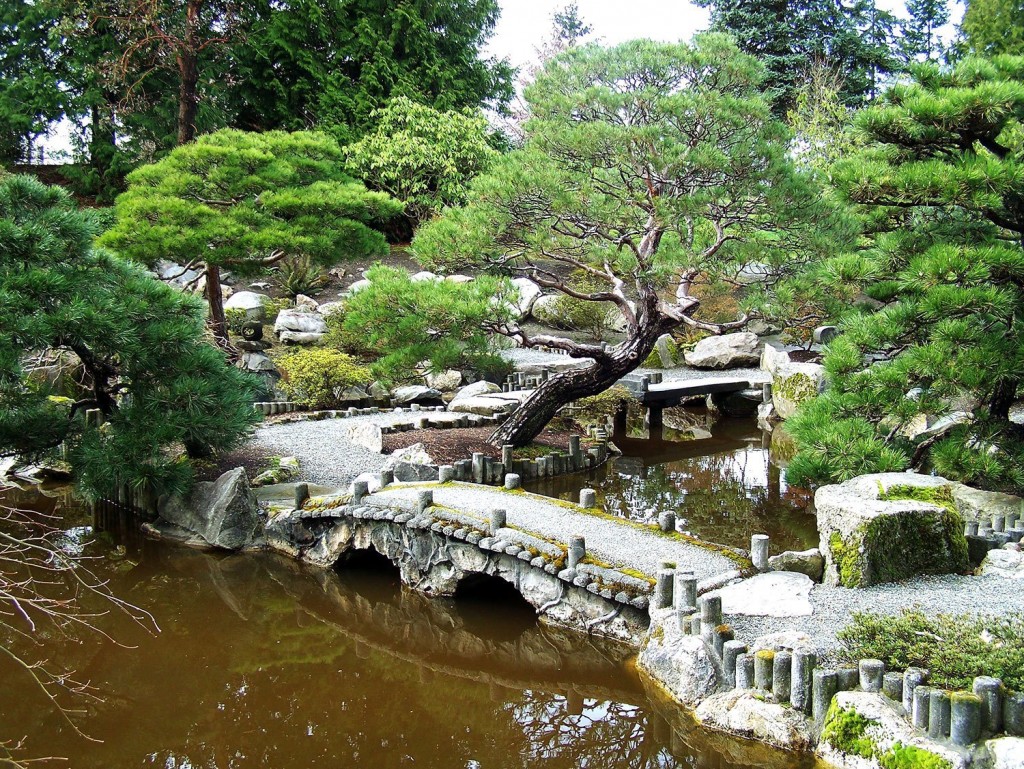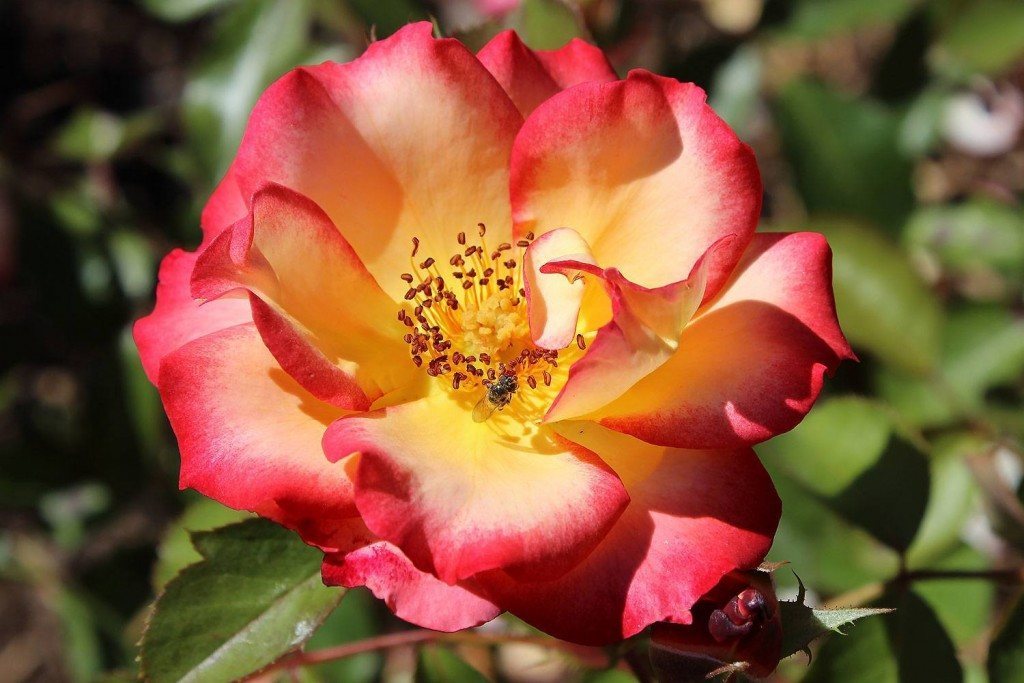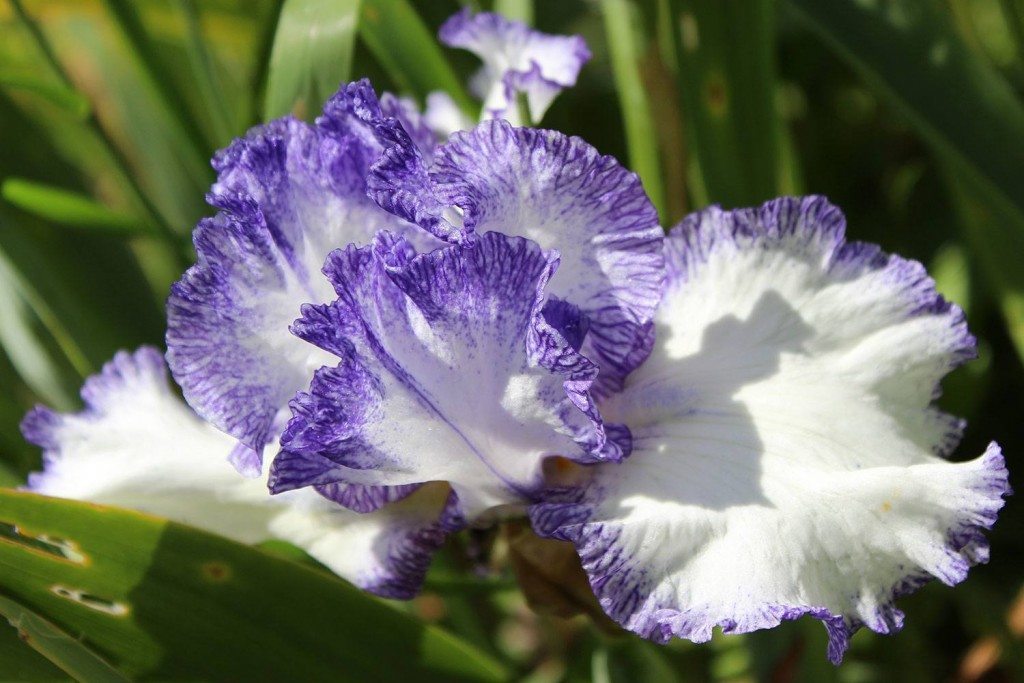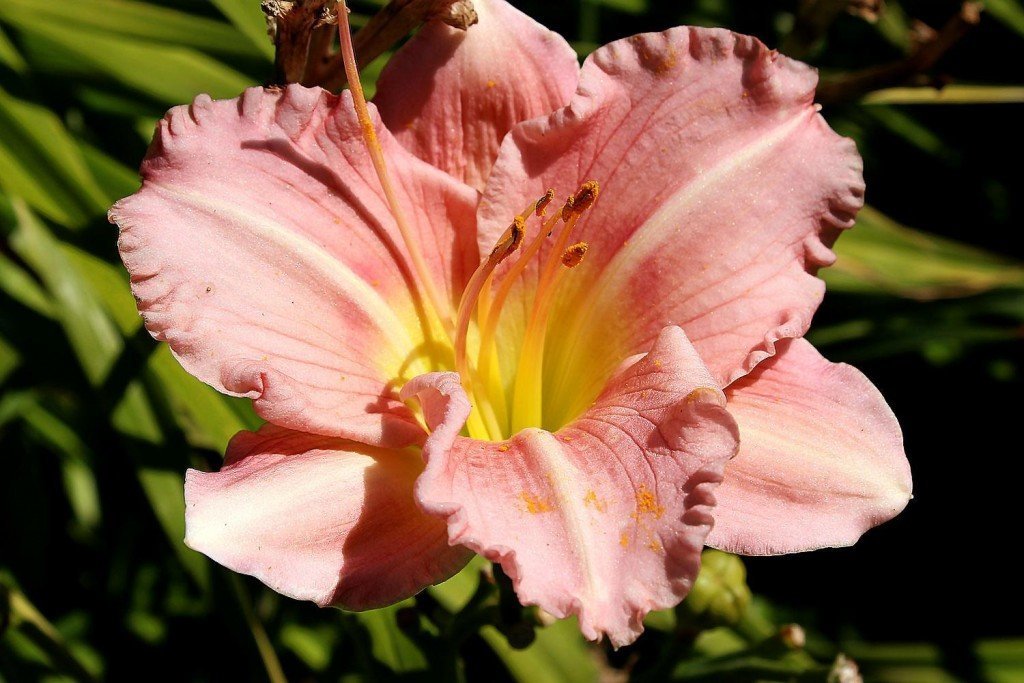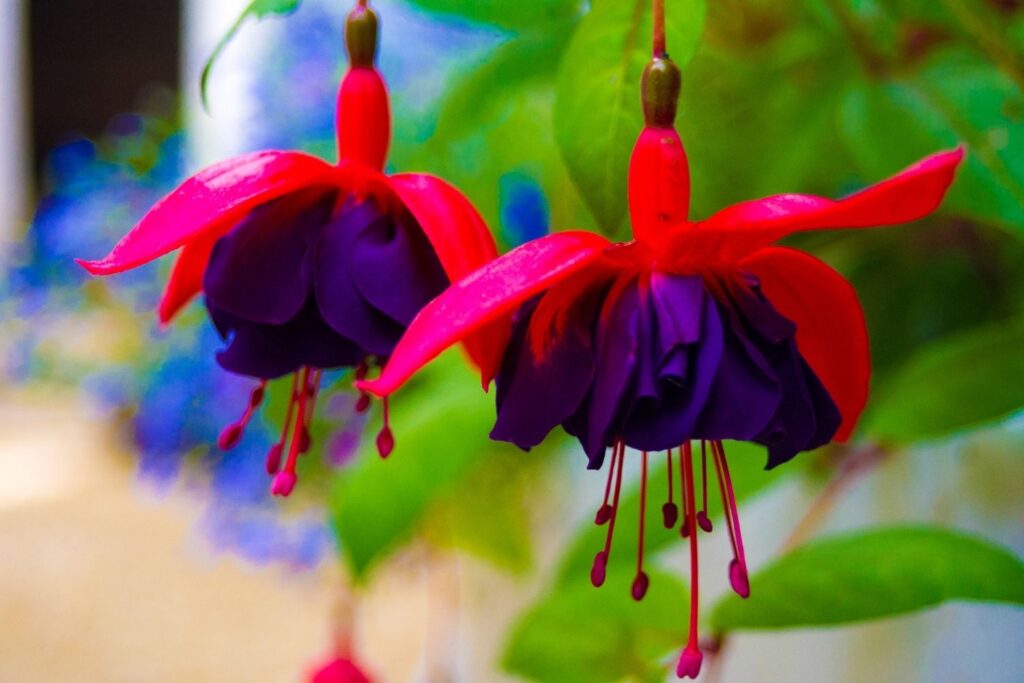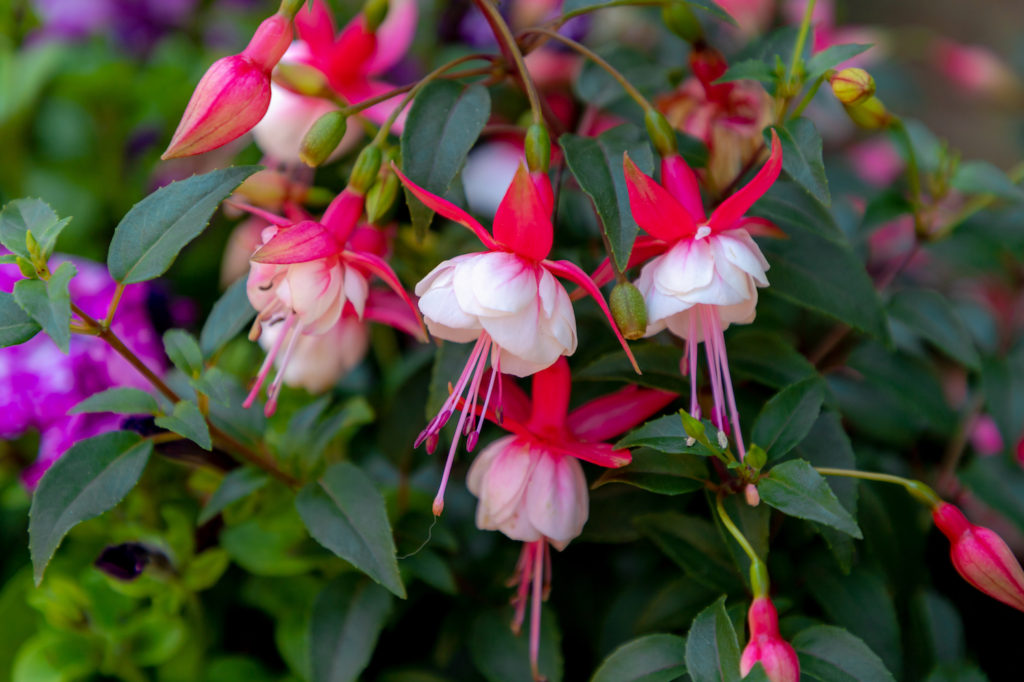Plant Societies and Highline SEATAC Botanical Garden
Highline SeaTac Botanical Garden partners with plant enthusiasts around King County to create spectacular beds of iris, daylily, fuchsia and rose.
- Elda Behm's Paradise Garden
- Seike Japanese Garden
- Seattle Rose Society Celebration Garden
- King County Iris Society
- Puget Sound Daylily Club
- Western Fuschia Species Society
- Puget Sound Fuchsia Society
- Future Garden Expansion
Once a magnificent private garden (Learn more), Elda’s garden plays on the concepts of shade, sunlight and water. The peaceful sound of the waterfalls and the birds they attract will briefly make you forget how close this garden is to the airport. Elda’s garden features a winding, ADA accessible path through a one acre garden, past flowing streams, a still pond, and a rustic pergola.
As you wander beneath the dappled light of the alder and madrona that predate the garden, you will find a wonderful variety of shade plants including Elda’s signature, the beautiful black trilliums. From spring ephemerals through autumn, enjoy a seemingly endless kaleidoscope of beautiful blooming perennials; check out our instagram account to see what’s flowering right now.
The water feature is centered around a huge cedar root and a massive glacial erratic found during the pond’s excavation. Some folks think the cedar root looks like a dragon, others say a horse. What do you see? The Paradise Garden also contains an amazing collection of specimen trees and evergreen shrubs which provide structure and beauty even in the gloomiest months of winter before the early hellebores have started blooming. A visit, any day of the year, is sure to inspire and delight.
Tucked into the east corner of the property, the Seike garden is a place to discover and then visit again and again throughout the different seasons. A gravel path zigzags down the hill, past viewing spots and benches, to the base of this pond-and-mountain style garden. Please help us control soil erosion by respecting fenced areas.
The 1500-square-foot pond and the stream and waterfall towering above it, are crossed by many bridges, creating a sense of space and travel, with scenic points tucked into each level. See if you notice the stones that form a giant turtle climbing out of the lower pond. Many of the plants were from Shinichi Seike’s personal collection, including a gnarled laceleaf Japanese maple now more than 100 years old. Red and Black pines installed as saplings are now magnificent hand-pruned specimens. In 2021, the garden will install the last trees to complete the garden design.
This beautiful garden was previously located at the former site of the Des Moines Way Nursery in the city of SeaTac. In danger of being sold due the expansion of SeaTac Airport, the project to save the garden is believed to be the largest relocation of a Japanese Garden ever attempted in the United States. This Garden was the private collection of the Seike family, a Highline family whose story of injustice, displacement and courage, can be found (here) The garden is at once a beautiful place to find peace and contemplation, a faithful recreation of designer Shintaro Okada’s intent, and an historical amenity.
A copy of the DVD which tells the story of the Seike Japanese Garden Is available through the King County Library System (DVD-2008, DVD 712.509797).
The Seattle Rose Society is a non-profit organization founded in Seattle, Washington in 1913. We promote interest in roses through membership meetings, a monthly newsletter, The Rose Petals, our annual rose show, educational programs, and other community activities. We began our stewardship of the rose garden at the Highline SeaTac Botanical Garden in 2004. The garden will be in bloom from May into November.
Information on rose growing and society activities can be found at www.seattlerosesociety.com
The King County Iris Society (KCIS) is a group of active gardeners growing many kinds of irises. Our function is to inform and educate the public about the many different types of irises and how they can be utilized to enhance any landscape.
Our collection at Highline SeaTac Botanical Garden highlights the various types of iris that grow in our area, including newer and older varieties. The iris bloom season at Highline is usually from late April through June.
Information on our organization can be found at www.kcis.org and on our Facebook page at https://www.facebook.com/KingCoIris/
The Puget Sound Daylily Club, a member of the American Daylily Society Region 8, provides the public with a collection of daylilies that demonstrate their beauty, versatility, longevity and easy maintenance.
The display bed invites garden guests to enjoy, find delight in and explore the diversity in form, height, and color of the daylily. These beauties are not just your great grandmother’s yellow daylily. The garden is in bloom mid-June to the end of July.
For more information about the club https://daylilies.org or contact Kathryn Sheldon kayst4me@hotmail.com or Caroline Zebroski caroline.zebroski@yahoo.com
Western Fuchsia Species Society was started in 1985 as a special interest group in the Northwest Fuchsia Society. Our website is part of the NW site-nwfuchsiasociety.com/species.
Native species are grown in Mexico, Central America, South America and New Zealand. Our purpose is to educate the public about the hardiness and variety of specimens that are the ancestors of the lovely hanging baskets seen in the summer. Species fuchsias can grow as a groundcover or to an 8’tall shrub and are best viewed in the late summer.
The Puget Sound Fuchsia Society was established in 1946 (the oldest fuchsia society in the Northwest). The intent of the garden is to show the beauty and the large variety of colors and shapes of fuchsias as well as to educate people about fuchsias that grow well in the Pacific Northwest.
Fuchsias are perennials that bloom for a long time. The best season for visiting the fuchsia garden is in late Spring through Fall, with full bloom and viewing pleasure during the summer.
Information about fuchsias and our society can be found at: Northwest Fuchsia Society www.nwfuchsiasociety.com
Highline SeaTac Botanical Garden is a growing and changing garden. With 6 acres of undeveloped property in our footprint, we have plans for some exciting new gardens, and space to build them. With your help, we can continue to create gardens that tell the stories of our community.
In 2018, the City of SeaTac in partnership with the Highline SeaTac Botanical Garden Foundation contracted with Site Workshop, best known for its development of the Amazon Spheres in Seattle, to complete a master plan. They worked in a collaborative process including community engagement, site design, concept development, presentation drawings and conversations which have resulted in an imaginative master plan for the site’s future expansions
A conceptual drawing of the master plan appears below:

Some exciting peeks into the garden’s future include:
- The visitor center and event meadow: Indoor and outdoor spaces with the capacity for programs, conferences and community use, encouraging local residents and visitors to the area to visit and enjoy the Garden.
- Lins’ Family Peony Garden:
- In 2023 this garden was installed featuring over 20 herbaceous peonies bred by a local enthusiast.
Restored Wetland and boardwalk: West of the Paradise Garden, there is currently a storm water retention pond that can be developed into a restored wetland surrounded by a boardwalk
